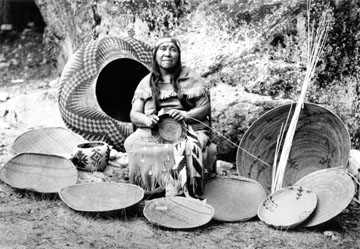Product Description
Important Monoche / Mono “Feast” bowl / basket c. 1910


Important Monoche / Mono “Feast” bowl / basket c. 1910
ANE CHRISTENSEN (b.1972) born in Copenhagen, Denmark/ based in London, UK
Bowl 1999
Sterling silver
Marks: AKC, 925, Z, British hallmarks
H: 2 ½” x L: 12”
Price: $5,950
The starting point for all of metalworker Ane Christensen’s tableware is a single sheet of metal. Her aim is to develop a three dimensional object from a flat sheet without adding or removing any elements. Japanese paper packaging influences Ane’s work, but a more important influence is the half finished or half demolished structures of building sites that she says can hold unexpected sculptural qualities.
Ane graduated from the Royal College of Art and has since been involved in exhibitions in London, Denmark and Copenhagen, including more recently at Collect, V&A.
Ane makes pieces in a variety of metals including silver, stainless steel and powder coated copper.
TLINGIT TRIBE / NORTHWEST COAST
Chevron/diamond storage basket, late 19th Century, early 20th Century
Handwoven split conifer root (buff), bear grass (white), woodwardia fern stem dyed with alder bark (rust), maidenhair fern stem (black), willow shoots
For more information see: The Fine Art of California Indian Basketry, Brian Bibby (Sacramento/Berkeley: Crocker Art Museum, Heyday Books, 1996), p. 90.
H: 8 1/2” x D: 11”
